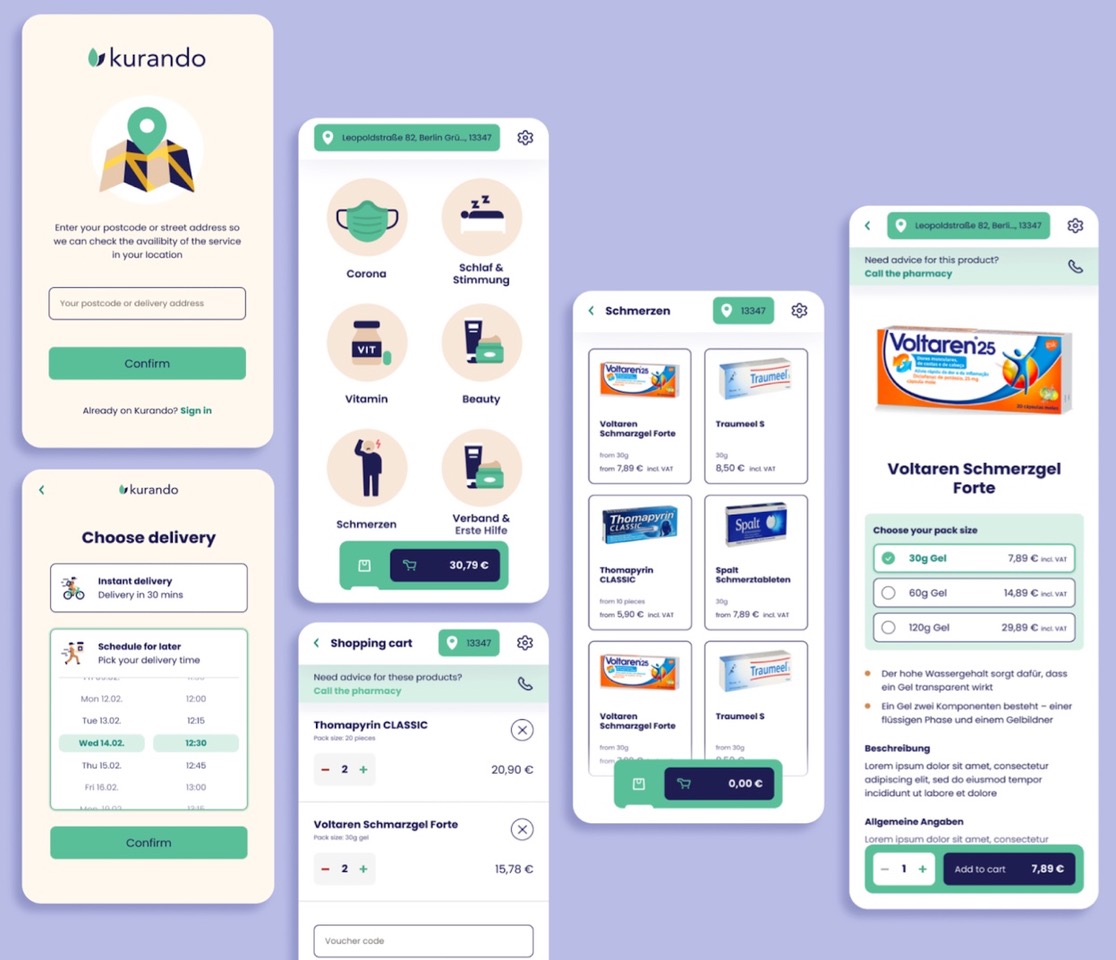Article

Headless Commerce Systems – How To Accomplish Your Goal Of A Personalized Shopping Experience
The retail apocalypse has happened: while brick-and-mortar shops have taken a hit (e.g., Toys R Us, Blockbuster Inc), the global eCommerce market has significantly increased over the last few years. Retail customers continue to shift from physical to online shopping. Induced by the pandemic, this trend will accelerate rather than stop.
Why headless commerce is key to staying competitive in online retail
Market shares given up by the brick-and-mortar stores will mostly be claimed by online retailers. A greater and steadily increasing demand in eCommerce makes this industry an exciting field of business, however, also highly competitive.
Keeping up with the market in online retail revolves mainly around a personalized customer experience. This starts with consistent branding throughout all channels: converting your customers’ attention on social media or online advertising to a selling customer requires a frictionless customer journey.
Furthermore, building a community around your brand means you need to be responsive and, more importantly, flexible to react to customer demands. Studies from Gartner and Accenture show that personalization in eCommerce or a lack thereof could increase profits up to 15% and lead to customer loss of more than 30%, respectively.

So, which way to go to deliver a personalized shopping experience?
Standard out-of-the-box online shop solutions such as Shopify can only barely be personalized. And unfortunately, self-implemented solutions that could be, take a lot of time and effort to deliver.
The magical term that promises to address the demand for personalization in your online shop while requiring only a manageable effort to implement is “headless commerce solutions”. These systems decouple your digital touchpoints (i.e., the front-end) from a set of provided business services (i.e., the back-end), such as “Commerce”, “Content”, “Payment” etc. Thus, you are free to develop every aspect of the customer touch-point flexibly, while leveraging pre-configured services (e.g. backoffice, checkout, etc.) that are available out of the box.
How to find the right solution for your business
As an increasing number of providers offer headless commerce solutions, it is tough to make the right choice. We helped our clients with this complex decision by establishing several vendor selection criteria, such as:
- Investment: Is the pricing structure transparent and flexible? How reasonable is the price for the tool’s capabilities?
- Usability: Is the tool simple to learn? Does the provider offer tech support and training?
- Integration: How complex is it to adapt to connect internal elements and connect with other tools? Does the provider follow an API-first approach?
First of all, the selection of the tool should be dependent on your growth targets, on the number of users, the number of products offered, etc.
Investing in large and highly scalable solutions might not be necessary for start-up companies. Optimizing for future growth targets at the beginning of business often leads to more problems than benefits.
Secondly, the client should maintain the tool, ideally soon after the implementation. Providing a well-functioning back office solution (i.e., merchant center) is beneficial. Offering training and onboarding sessions are too.
Lastly, suppose any aspects of the vendor’s solution do not meet the client’s demands (e.g., the shopping cart). In that case, it should be possible to implement and integrate those self-sufficiently through standard APIs. If integrations are hard to establish, the tool is to be excluded. This is primarily a non-compensatory criterion.

Read how TrueNode integrated a headless commerce solution for Kurando
The four key ways to master the integration of a headless commerce solution
Approaching a headless commerce implementation project may only sound dreadful when there are many unknowns.
Having tackled these projects several times, we developed four key aspects to master the most significant challenges:
- Thoughtful setup of data modelling and organization
In an eCommerce context, dealing with a highly complex data model is often necessary for a myriad of reasons: Integration of new products or product types (i.e., sizes), managing the merchant’s different location and business hours, and changes in the status of an order and shipment – only to name a few. Therefore, understanding the client’s business model to define the architecture and the solution setup concerning the data organization is the first step of the implementation. - Knowing the provider and tool-specific capabilities and limitations
Likewise, you must know the provider- and tool-specific possibilities and limitations. Training on the tools and experience with the platform are two different things. For example, you can flexibly work on data objects in some solutions; however, learning requires time. As we have worked together with many vendors, we know their strengths and weaknesses and learn how to utilize and configure them to their fullest extent. - Reducing the pressure on back-office operations
Furthermore, our clients need to understand that the customer front-end should not be the only focus of the implementation. As long as you have not technically enabled the back-office processes, there is a high pressure lasting on operations. You can change data with manual work through APIs, which is very time-consuming and rigid. Automating these processes is possible but requires the expertise we acquired in our last client engagements. - Establishing mixed project teams
Regardless of the solutions that we provide to each of the challenges of implementing the headless commerce solution, we work closely with our clients. Our experience has shown that leaving the implementation solely to third parties will eventually lead to an unsatisfactory result. Knowledge is not sufficiently communicated. The client cannot build autonomy to maintain the system, the costs for implementation are high. We recommend building cross-functional teams between the client and the implementation provider to secure proper knowledge transfer and risk mitigation from the early start of the projects.
The benefits you can reap from switching to headless commerce
Having selected the right provider and overcoming all pitfalls during integration, we could leverage significant advantages for our clients.
After switching from a standardized shop solution to a headless commerce system with customized front ends, our clients experienced significantly higher conversion rates.
Not only did we see better direct financial outcomes, we also realized that our clients NPS increased noticeably as a clear sign for an improved customer experience.
Beyond that, the frictionless branding experience strengthened their brand significantly. Even though it is hard to quantify and relate directly to the switch to a headless commerce solution, our clients reported a higher recognition and awareness rate of their brand.
Conclusion
Deciding for a headless commerce solution integration is often the right thing to do from a business perspective. However, selecting the right vendor and managing the integration is hard if you do not have experience in that field.
If you want to avoid expensive mistakes, TrueNode is happy to support you.
At TrueNode we build products like ventures, bringing together product design, growth marketing, and engineering on a single team with a focus on validation.
Our partnership with Symphony, a software design, and development company for the world’s most innovative brands, means our integrated teams can work across the product lifecycle to dream, design, align, build, hack, and ship products fast.
Feel free to reach out to us here to share your eCommerce plans and journey.







